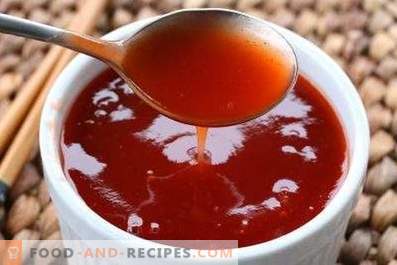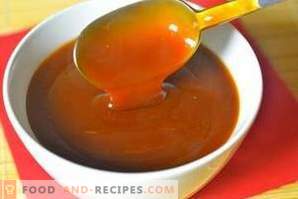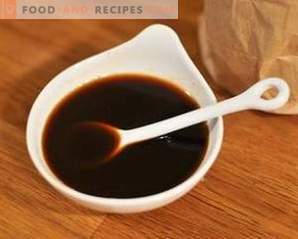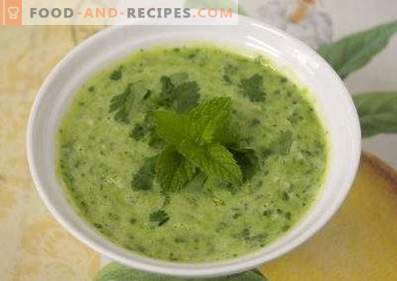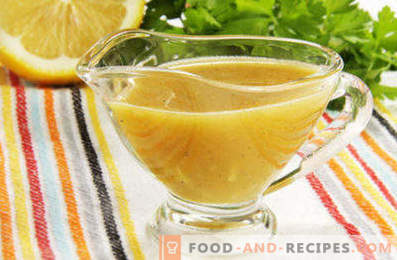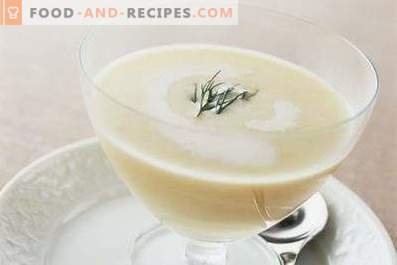
If Japan serves a dish that includes eel, then unagi sauce will certainly be served to it, unless you use it as a dressing. However, this is not the only possible application of this unusual sauce with a salty-smoked taste and a sweet aftertaste. It is in perfect harmony with any fish dishes, they can fill soups and rice, cooked according to Asian recipes. Therefore, fans of oriental cuisine will not hurt to learn how to make unagi sauce at home, especially since it is not easy to get this dressing, and it is very expensive.
Cooking Features
Cooking unagi sauce using classical technology takes a long time, but there is nothing difficult in the process of making this dressing. The biggest challenge is getting the right components. Therefore, they are often replaced with alternative ones. The taste of the sauce in this case is far from being identical to the natural one, but nevertheless it performs its functions, being an excellent addition to sushi and other fish and seafood dishes. So you can choose any recipe, the main thing is to follow the rules of making Japanese sauce.
- Most often, in Japan, unagi is used to make unagi sauce, which is a culinary rice wine. It is not as strong as sake, has a pronounced sweetish taste. If this component cannot be obtained, it can be replaced with ordinary white table wine, preferably semi-sweet.
- The second component, which is not very accessible to our compatriots, but is mentioned in the traditional recipe of unagi sauce, is hondashi seasoning. In fact, it is dry fish broth. So seasoning can be replaced by highly concentrated fish broth.
- Traditional technology of making unagi sauce implies long-term boiling of a fairly liquid mixture. This mixture has to constantly stir and make sure that it does not burn. For this reason, today, many cooks are retreating from traditional technology, using starch to thicken the sauce. You can do that too.
- The composition of the sauce may include several types of alcohol, and in considerable quantities. However, after a long processing of the taste of alcohol in the sauce does not remain, so it is impossible to get drunk from its use.
If you want to experiment with making unagi sauce, you can of course do it. Just do not get carried away by the addition of spicy and strongly spicy seasonings, as this can spoil the taste of the sauce and make it unsuitable for the dishes to which it is traditionally served.
The classic recipe for unagi sauce
Composition:
- dry white wine - 100 ml;
- mirin - 100 ml;
- soy sauce - 100 ml;
- seasoning hondashi - a pinch;
- sugar - 20 g.
Method of preparation:
- Mix white wine, soy sauce and mirin. Add to them hondashi and stir.
- Place the pan with the resulting mixture on the stove.
- On medium heat, bring to a boil, reduce heat to low and simmer the sauce for 2 hours.
- Grind sugar to a state of powdered sugar in a coffee grinder, add it to the sauce.
- Wait until the sugar has dissolved, and remove the saucepan from the heat.
After that, unagi sauce can be immediately used as a dressing, or it can be cooled, poured into a sauceboat, and served to fish dishes separately. Acceptable combination of both options.
Adapted recipe for unagi sauce with honey and ginger
Composition:
- soy sauce - 150 ml;
- corn starch - 10 g;
- honey - 20-30 ml;
- ginger root - 15 g;
- olive oil - 150 ml.
Method of preparation:
- Pour the butter into the bowl, add honey to it.
- Dissolve starch with soy sauce.
- Peel and finely rub the ginger.
- Put the bowl of oil in the water bath. Warm it up for 10-15 minutes. Honey during this time should melt and dissolve in oil.
- Pour in the soy sauce with the starch dissolved in it. Continue to heat the sauce for another 5 minutes.
- Add ginger, mix. After a couple of minutes, remove from the water bath.
Cool the sauce, pour the fish with it before serving. You can use it for cooking fish dishes, rice filling.
Unagi sauce with smoked eel
Composition:
- soy sauce - 0, 2 l;
- smoked eel - 50 g;
- sugar - 100 g;
- water - 160 ml;
- corn starch - 15 g;
- Mirin or white semi-sweet wine - 0, 25 l.
Method of preparation:
- Mix half of the water indicated in the recipe with wine and soy sauce. Place on the stove and simmer for 10 minutes after boiling.
- Dissolve starch with remaining cool water.
- Finely chop the eel.
- Pour sugar into the liquid boiling on the stove. Stir until it dissolves.
- Enter the starch, constantly stirring the sauce at this time so that no lumps form.
- After cooking for 2-3 minutes, add the crushed eel, cook for another minute and remove from the heat.
Before serving, the sauce should be allowed to infuse. If it cools down during this time, it's okay - unagi is most often served cold.
Unagi sauce with sake and vegetables
Composition:
- honey - 50 g;
- sake - 100 ml;
- white table wine - 90 ml;
- carrots - 50 g;
- onions - 35 g;
- garlic - 1 clove;
- soy sauce - 100 ml;
- water - 90 ml;
- corn starch - 15 g.
Method of preparation:
- Water is divided into two parts. In one part, dilute the starch. Heat the other and mix with honey.
- To the part of the water that is mixed with honey, add soy sauce. Put this mixture on the fire and bring to a boil.
- Wash vegetables, peel them, cut them into small pieces and send them to boiling liquid. Cook them for 20 minutes.
- Strain the broth, throw away the vegetables - they will not be needed anymore, and it is impossible to eat them, as they are very salty.
- Pour wine and sake into the broth. Heat it up again.
- Pour water with starch into it and boil, stirring, until the sauce has a consistency resembling jelly.
It remains to remove the unagi sauce from the heat and cool. Serve it to any fish dishes.
In Japan, unagi sauce is one of the most popular, but in Europe it is in demand, as it gives fish a unique taste. Make this refueling or its analogue at home.


